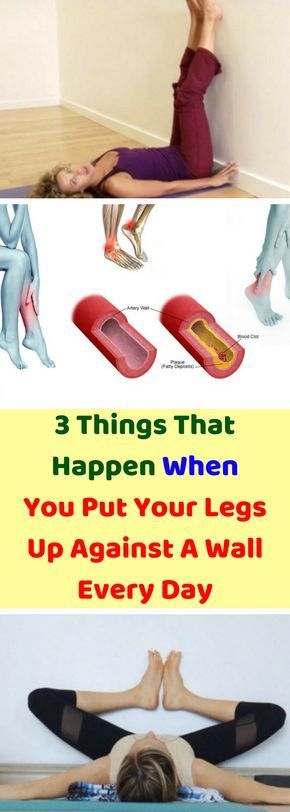Putting your legs up against a wall, also known as “legs up the wall” or Viparita Karani in yoga, is a simple yet effective practice with numerous potential benefits. Here are three things that may happen when you do this daily:
Certainly! Here’s a more detailed exploration of the potential benefits and effects of putting your legs up against a wall daily:
Improved Blood Circulation:
When you elevate your legs above the heart level, gravity assists in promoting venous return, which is the flow of blood back to the heart. This position helps to alleviate pressure on the veins in the legs, potentially reducing swelling and discomfort associated with poor circulation. Improved blood flow can also aid in the removal of metabolic waste products from the muscles, contributing to faster recovery after physical activity.
Reduced Swelling and Fluid Retention:
Elevating the legs can help facilitate the movement of excess fluid from the lower extremities back into the bloodstream. This can be particularly beneficial for individuals who experience swelling or edema in the legs due to factors such as prolonged sitting or standing, pregnancy, or certain medical conditions. By encouraging fluid drainage and circulation, putting your legs up against a wall may help alleviate symptoms of swelling and promote a sensation of lightness and comfort in the legs.
Alleviation of Lower Back Pain:
Placing your legs up against a wall can help release tension in the muscles of the lower back, hips, and hamstrings, which are commonly associated with lower back pain. By allowing these muscles to relax and elongate, you may experience a reduction in discomfort and improved flexibility in the lumbar spine. Additionally, the gentle traction provided by the inverted position can help decompress the spine and relieve pressure on the intervertebral discs, potentially providing relief for individuals with mild to moderate lower back pain.
Stress Reduction and Relaxation:
Legs up the wall pose is often regarded as a restorative yoga posture that promotes relaxation and stress relief. By encouraging deep diaphragmatic breathing and activating the parasympathetic nervous system, this pose can help induce a state of calmness and tranquility. The gentle inversion also promotes a sense of grounding and stability, allowing you to let go of tension and anxiety accumulated throughout the day. Practicing legs up the wall regularly as part of a mindfulness or relaxation routine may contribute to improved mental well-being and emotional balance.
Enhanced Post-Workout Recovery:
Incorporating legs up the wall into your post-workout routine can aid in muscle recovery and alleviate post-exercise soreness. By promoting circulation and lymphatic drainage, this pose helps flush out metabolic by-products such as lactic acid that can accumulate in the muscles during physical activity. Elevating the legs can also help reduce inflammation and promote tissue repair, allowing for faster recovery between workouts and potentially enhancing overall athletic performance.
In summary, putting your legs up against a wall daily offers a multitude of benefits for both physical and mental health. Whether you practice it for a few minutes as part of a yoga or relaxation routine or incorporate it into your post-workout recovery regimen, this simple yet effective pose can help improve circulation, alleviate swelling and discomfort, reduce stress, and enhance overall well-being. As with any new practice, it’s important to listen to your body and consult with a healthcare professional if you have any underlying medical conditions or concerns.
